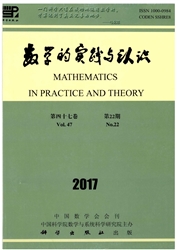

 中文摘要:
中文摘要:
基于劳动力区位选择理论,采用中国营养健康调查微观(CHNS)数据,通过修正劳动力区位选择偏误处理效应模型(Treatment Effect Model)实证研究了劳动力转移对于农村居民收入的影响及其变迁.首先,劳动力转移增加了农村居民的收入,劳动力转移的增收效应1993年最高,随后增收效应出现了下降趋势.2004年出现"民工荒"后,增收效应开始逐渐上升,反应了劳动力转移与收入差距的互动关系.其次,劳动力区位自选择对于收入的影响是显著地,说明了从微观角度分析劳动力转移的各种效应时修正自选择偏误的重要性.最后,高中和职业教育是农村居民收入的重要影响因素,且对收入的影响力逐渐上升。
 英文摘要:
英文摘要:
Based on the theory of location choice the influence of labor transfer on the rural residents' of labor, this paper empirically studies on income and its change by Treatment Effect Model which can revise the bias of labor's location choice using micro survey data of CHNS (Chinese health and nutrition survey). Conclusions are as follows. Firstly, Labor transfer increases the rural residents' income. The increase effect of labor transfer on income was the highest in 1993, and then the effect appeared a downward trend. After the shortage of migrant workers in 2004, the increase effect began to raise gradually, which reflected the interactive relationship between labor transfer and income gap. Secondly, the labor's self-selection of location is significant in the income equation, so the analysis of the various effects of labor transfer from the microscopic view should consider the labor's self-selection bias. Finally, the high school and vocational education are the important factors affecting rural residents' income and their influence on income rises gradually.
 同期刊论文项目
同期刊论文项目
 同项目期刊论文
同项目期刊论文
 期刊信息
期刊信息
